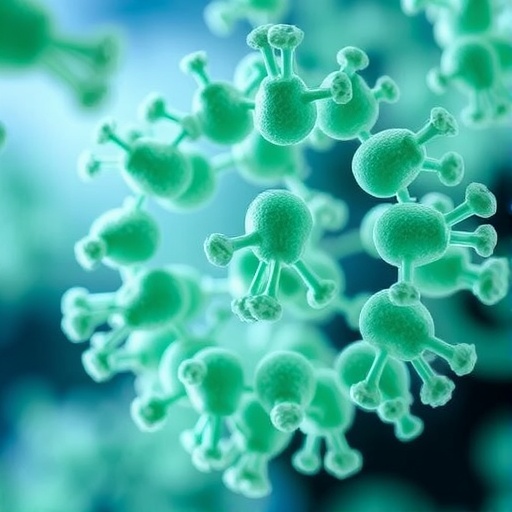The continuous production of chemicals through microbial processes has emerged as a promising avenue for enhancing efficiency in biomanufacturing. Yet, this method is fraught with challenges, including microbial mutations and fluctuations in productivity, which can result in unexpected shutdowns or “worker strikes.” These setbacks stem from the inherent biological nature of microbes, which are primarily programmed for self-replication rather than the production of specific chemicals desired by humans.
At the forefront of tackling these issues is a dedicated research team from the McKelvey School of Engineering at Washington University in St. Louis, under the leadership of Professor Fuzhong Zhang. Zhang is spearheading an interdisciplinary project aiming to develop an innovative genetic “switch” that can enhance the productivity and reliability of microbes during extended fermentation periods. This approach seeks to create a more stable environment for microbial production, thereby facilitating long-term continuous fermentation processes that outperform the batch system currently in widespread use.
.adsslot_ZcaIr2gEpR{ width:728px !important; height:90px !important; }
@media (max-width:1199px) { .adsslot_ZcaIr2gEpR{ width:468px !important; height:60px !important; } }
@media (max-width:767px) { .adsslot_ZcaIr2gEpR{ width:320px !important; height:50px !important; } }
ADVERTISEMENT
The collaboration of experts across several institutions—including biological engineers from the University of California Riverside and Texas A&M University—underscores the collective effort to push biomanufacturing into a new era. Funded by the Defense Advanced Research Projects Agency (DARPA) through the “Switch” program, the team has been awarded funding of up to $5.2 million to develop solutions that will enable continuous fermentation at a scale that rivals traditional petrochemical production.
Exploring the parallels between biomanufacturing and traditional brewing practices offers valuable insights into the challenges faced in scaling microbial production. Like breweries, which utilize fermentation to yield beer, the biomanufacturing sector leverages microbial function to produce vital chemicals, including those found in pharmaceuticals and nutritional supplements. Unfortunately, the batch-based approach typical of these industries limits efficiency and ultimately raises production costs, preventing widespread adoption of biomanufactured products.
Continuous fermentation represents an ideal solution, allowing for prolonged microbial activity within bioreactors, where conditions can be finely controlled. This process enables the microbes to convert substrates into valuable products over periods that can extend for weeks or even months. While the concept sounds promising, maintaining microbial health and productivity during such an extended timeframe proves challenging, as is evidenced by various biological factors that can disrupt production flows.
Zhang’s research team aims to create a genetic switch that would empower microbes to better adapt to the rigors of continuous fermentation. Rather than simply mitigating one instability after another—akin to a game of whack-a-mole—the team intends to fundamentally change how microbes operate during these prolonged periods. Their approach seeks to capitalize on microbial evolution by directing it to favor production strains, thereby converting a biological challenge into an asset for efficient manufacturing.
This innovative switchable system is set to tackle numerous factors contributing to instability in biomanufacturing, including metabolic shifts and substrate limitations. By enhancing the microbes’ ability to maintain their production capabilities over time, researchers hope to reduce operational costs and improve the overall reliability of bioproduct supply chains.
With the potential to revolutionize the biomanufacturing landscape, this research holds promise for achieving a more sustainable production model that benefits a wide range of industries, from pharmaceuticals to biofuels. The implications of successful continuous fermentation technology go beyond cost savings; they present an opportunity to shift towards a greener economy, reducing humanity’s dependence on fossil fuels and minimizing the detrimental environmental impact of carbon emissions associated with traditional petrochemical processes.
In summary, the collaboration between leading researchers dedicated to continuous fermentation could usher in a new chapter for the biomanufacturing industry, laying the groundwork for efficient and eco-friendly production methods. As the project progresses, it may not only expand the market for microbial-produced chemicals but also serve as a catalyst for further innovations in the field, ultimately positioning these engineered microbes as key players in a sustainable future.
The intersection of synthetic biology and advanced engineering is creating unprecedented opportunities in the realm of biomanufacturing. While overcoming the myriad of challenges associated with continuous fermentation remains a formidable task, the work being conducted by Professor Zhang’s team exemplifies the spirit of innovation needed to bring these transformative ideas to fruition. By leveraging the inherent capabilities of microbes and aligning them with human needs, this research could pave the way for a new era of sustainable manufacturing that could resonate deeply within both environmental and economic spheres.
Subject of Research: Development of continuous fermentation systems in biomanufacturing through genetic engineering of microbes.
Article Title: Advancements in Biomanufacturing: Unlocking the Potential of Continuous Fermentation
News Publication Date: October 2023
Web References: https://www.darpa.mil/research/programs/switch
References: Not Applicable
Image Credits: Not Applicable
Keywords
Biochemical processes, Energy resources, Industrial science, Engineering
Tags: biomanufacturing advancementschallenges in microbial processescontinuous production in biomanufacturingeco-friendly manufacturing solutionsengineered microbes in industryfederal funding for biomanufacturinginnovations in genetic engineering for biomanufacturinglow-carbon footprint technologiesMcKelvey School of EngineeringProfessor Fuzhong Zhang’s researchsustainable chemical productionWashington University research initiatives





